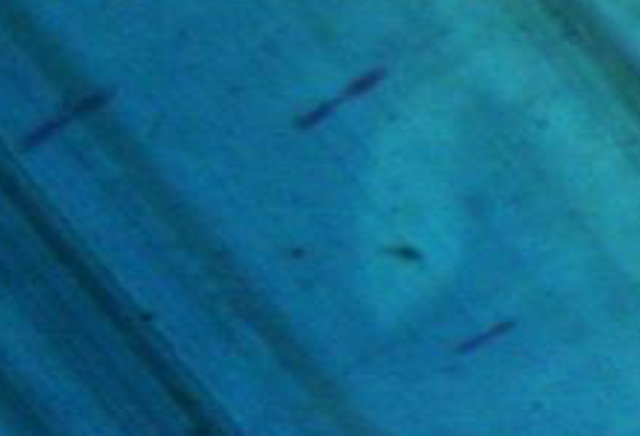⚡ What is a VLF (Very Low Frequency) Test?
Very Low Frequency (VLF) testing with Tan Delta (Loss Angle) and/or VLF withstand testing, particularly for medium voltage (MV) and high voltage (HV) cable insulation assessment.
VLF testing is a diagnostic method used to assess the insulation integrity of medium and high-voltage power cables (typically 6.6 kV and above). It applies an AC voltage at a frequency of 0.1 Hz or lower, which significantly reduces the power requirement compared to 50/60 Hz testing while still stressing the insulation similarly.
VLF testing is commonly combined with:
-
VLF Tan Delta (TD): Measures dielectric losses and insulation condition.
-
VLF Withstand Test: Applies a high VLF voltage to check if insulation holds (go/no-go test).
-
VLF Partial Discharge (PD) Testing: Detects internal insulation defects.
Applications of VLF Testing
-
Commissioning of new cables (MV/HV, e.g., 11 kV, 33 kV)
-
Maintenance testing of aged cables
-
Cable fault location support
-
Assessment after repairs or splices
-
Predictive maintenance in asset management
✅ Advantages of VLF Testing
-
Lower power requirement compared to 50 Hz AC testing
-
Portable test equipment, suitable for field use
-
Non-destructive when done with diagnostics (e.g., TD, PD)
-
Effective insulation aging detection
-
IEEE and IEC recognized for MV cable testing
-
Faster testing compared to DC leakage or 50 Hz testing
❌ Disadvantages of VLF Testing
-
Not always suitable for HV extruded cables above 132 kV
-
Cannot simulate full 50/60 Hz behavior, especially for capacitive/reactive effects
-
Withstand-only VLF doesn’t provide condition trends (unlike TD or PD)
-
Test setup may require disconnection or cable preparation
-
For PD detection, sensitivity can be affected by cable geometry or accessories
Alternatives to VLF Testing
-
DC Hipot Testing
-
Older method, stresses insulation differently
-
Can be damaging to XLPE insulation (not recommended)
-
-
Power Frequency Testing (50/60 Hz)
-
Accurate but needs heavy, high-power equipment
-
-
Very Low Frequency with Partial Discharge (VLF-PD)
-
More advanced diagnostic method
-
-
Damped AC (DAC) Testing
-
More accurate at detecting PD and insulation issues
-
-
Online PD Monitoring
-
Real-time, condition-based assessment under operating voltage
-
-
Tan Delta Testing (50 Hz)
-
Can be done at normal power frequency if feasible
-
Relevant Standards
| Standard | Title |
|---|---|
| IEEE 400 | Guide for Field Testing and Evaluation of Insulation of Shielded Power Cable |
| IEEE 400.2 | Guide for Field Testing of Shielded Power Cable Systems Using VLF |
| IEEE 400.3 | Guide for Partial Discharge Testing of Shielded Power Cable |
| IEC 60502-2 | Power cables with extruded insulation and their accessories for rated voltages from 1 kV to 30 kV |
| IEC 60229 | Tests on cable oversheaths |
Cable Insulation Testing Methods Comparison
| Criteria | VLF Testing | DAC Testing | Online PD Testing |
|---|---|---|---|
| Full Name | Very Low Frequency Testing | Damped Alternating Current Testing | Online Partial Discharge Monitoring |
| Frequency Range | 0.1 Hz (typical) | 20–500 Hz (damped waveform) | 50/60 Hz (operating frequency) |
| Test Type | Offline diagnostic or withstand | Offline diagnostic | Online, non-intrusive |
| Purpose | Insulation aging (Tan Delta), withstand | PD detection and localization | Continuous PD monitoring |
| Stress Similarity to Operating Conditions | Moderate | High | Exact (operates at service voltage) |
| Power Requirement | Low | Medium | None (uses system voltage) |
| PD Detection Capability | Moderate (VLF-PD) | High | Very High |
| Tan Delta Testing | Yes (optional) | No | No |
| Fault Localization | Not possible | Yes (precise PD location) | Not directly; trending only |
| Cable Disconnection Required | Yes | Yes | No |
| Test Duration | Short to medium (15–60 min) | Short | Continuous or periodic |
| Risk of Damage to Aged Cables | Low if diagnostics used; withstand has risk | Low | None |
| Portability | High | Medium | High |
| Use Case | Commissioning, post-repair, condition monitoring | Commissioning, aging assessment | Condition-based maintenance, early warning |
| Best For | MV cables (up to 66 kV) | MV/HV cables (up to 220+ kV) | Mission-critical systems (e.g., substations, BESS) |
| Standards | IEEE 400.2, IEC 60502 | IEEE 400.4 | IEC 60270, IEC 62478 |
Summary Recommendations
-
Use VLF when you need a cost-effective, portable option for MV cable diagnostics (Tan Delta + Withstand).
-
Use DAC when you need accurate PD localization for HV cables and want to simulate operating stress with fewer risks.
-
Use Online PD when cables are in service, and early detection is critical, especially in critical infrastructure like data centers, substations, or BESS.
